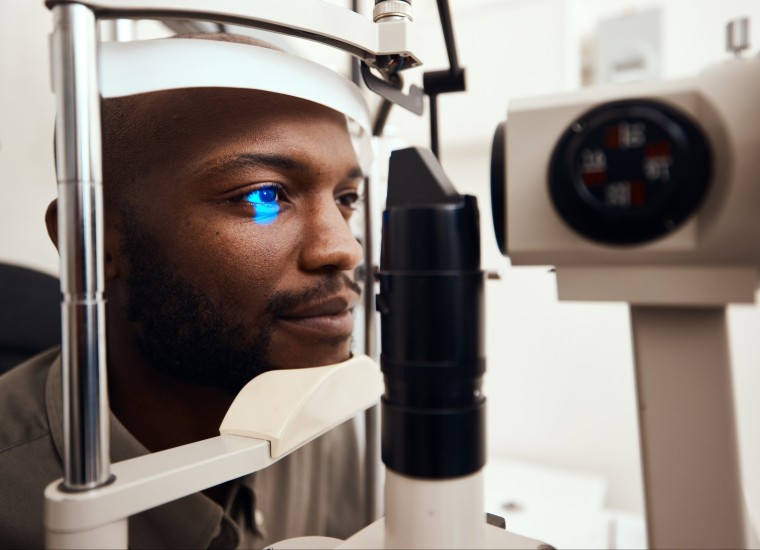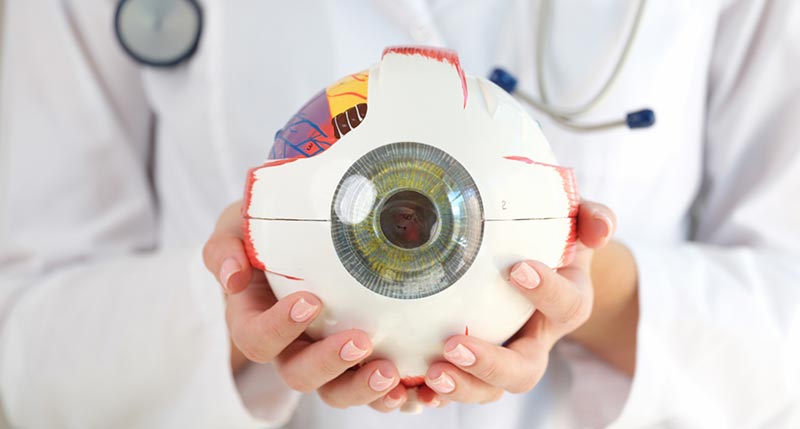Compassionate Eye Doctor: Specialist Care for Riverside Residents
Compassionate Eye Doctor: Specialist Care for Riverside Residents
Blog Article
The Comprehensive Eye Exam: What to Anticipate Throughout Your Visit to the Eye Physician
A see to the eye physician for a thorough eye exam is more than a routine exam; it is an essential step in safeguarding your aesthetic wellness. What exactly happens during the eye health and wellness assessment, and how does it affect the prescription process?
First Examination
The initial assessment throughout an eye exam acts as a crucial structure for recognizing a patient's aesthetic wellness demands. This stage sets the tone for the entire exam procedure, permitting the eye doctor to gather vital details regarding the client's medical background, way of life, and details vision issues. By carefully examining any type of pre-existing problems, medications, or previous surgical procedures, the eye treatment expert can tailor the assessment to deal with specific demands successfully.

Additionally, the initial examination is a chance for clients to articulate any concerns or concerns, promoting a joint partnership with their doctor. This communication not only ensures that the individual really feels educated and comfortable however likewise equips them to participate actively in their eye health administration. Jointly, these conversations make it possible for the optometrist to devise an individualized exam strategy, making certain optimal treatment and exact medical diagnosis.
Aesthetic Acuity Test
Kicking off the core components of an eye examination, the visual skill test is designed to evaluate the sharpness and clarity of a person's vision. This vital examination assists figure out how well a person can discern letters or icons at a standardized range, normally utilizing a Snellen chart (Eye Doctor Optometrist). The graph consists of rows of letters that reduce in dimension inside out, with the client placed at a popular range of 20 feet
During the test, the individual is asked to cover one eye and review aloud the smallest line of letters they can see clearly. This process is repeated for the other eye. The outcomes are taped as a fraction, with 20/20 vision suggesting normal aesthetic acuity-- where the individual can see at 20 feet what a person with typical vision can see at that range.
The aesthetic acuity examination likewise recognizes potential refractive mistakes such as astigmatism, hyperopia, or nearsightedness, which might require rehabilitative lenses. By developing a baseline of visual efficiency, the examination is a crucial analysis device that aids the eye treatment expert in establishing an appropriate treatment plan tailored to the individual's unique visual requirements.
Eye Health Analysis
Following the visual acuity examination, a thorough eye health assessment is carried out to guarantee the total well-being of the eyes. This important segment of the eye examination entails an extensive examination of both the external and internal structures of the eye.
Following, attention changes to the inner structures. With the use of ophthalmoscopy or fundus digital photography, the retina, optic nerve, and blood vessels are thoroughly assessed. This step is vital for identifying conditions such as retinal detachment, glaucoma, or diabetic retinopathy. In most cases, pupil dilation is carried out to enhance presence of the internal eye structures, although this may cause short-lived light level of sensitivity for the individual.
Additionally, intraocular pressure is check out here measured to evaluate for glaucoma threat. This is generally done utilizing tonometry, which can find raised pressure degrees that might recommend potential damage to the optic nerve. Jointly, these evaluations form a thorough evaluation to preserve eye wellness.
Refraction and Prescription
Refraction is an advanced treatment conducted by eye treatment specialists to identify the exact lens power needed to correct refractive errors such as nearsightedness, hyperopia, presbyopia, and astigmatism. The goal of this procedure is to evaluate how light bends as it passes with the eye, permitting the professional to figure out whether rehabilitative lenses are essential for boosted visual skill.
During the refraction procedure, the client is asked to browse a phoropter, a gadget that contains various lenses. The professional will methodically transform these lenses and ask the person to contrast quality between choices up until the most effective possible vision is accomplished. This treatment is crucial in crafting an accurate prescription that defines the appropriate lens power for eyeglasses or get in touch with lenses.
The prescription obtained from this procedure not just optimizes vision however likewise works as a structure for picking suitable restorative eyeglasses. It is necessary to make certain that prescriptions are regularly updated, as adjustments in vision can happen gradually, highlighting the significance of routine eye exams. This careful focus to information aids maintain clear, comfy vision in day-to-day live.
Follow-Up Referrals

During a follow-up see, the eye doctor will conduct a series of tests to examine aesthetic skill and check for any type of modifications in vision that might require an upgrade to the prescription. In addition, visit this website the follow-up provides a possibility to talk about any type of discomfort or issues experienced with present glasses. Modifications can be made to make sure convenience and efficiency, whether via lens adjustment or framework changes.
For clients with continuous conditions such as glaucoma, diabetes-related eye issues, or macular deterioration, even more frequent follow-ups might be necessary. These consultations are essential for managing and potentially reducing the development of eye illness. Following these suggestions can considerably add to preserving visual wellness and protecting against lasting complications.
Conclusion
The detailed eye exam is a necessary procedure for maintaining aesthetic health and wellness, encompassing a comprehensive assessment of case history and vision problems. Key parts include the visual skill test, which assesses eyesight quality, and the eye wellness analysis, which takes a look at the general condition of the eyes. Refraction examinations aid identify the accurate lens prescription necessary for optimum vision correction. Follow-up suggestions give advice for ongoing eye treatment, guaranteeing that any kind of potential issues are dealt with without delay and properly.
A check out to the eye physician for a thorough eye exam is more than a routine examination; it is an essential step in safeguarding your visual health.Kicking off the core elements of an eye exam, the visual acuity test is made to examine the sharpness and clearness of a person's vision.Adhering to the aesthetic skill test, a comprehensive eye health assessment is carried out to guarantee the overall health of the eyes. These check outs allow the eye care professional to check changes in vision, update prescriptions, and examine try this the general health and wellness of the eyes. Secret elements include the aesthetic skill examination, which examines vision clearness, and the eye health and wellness evaluation, which analyzes the overall problem of the eyes.
Report this page